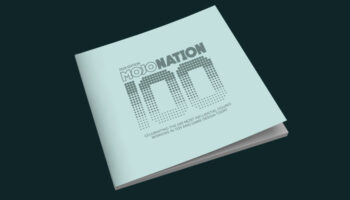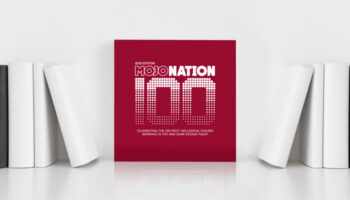Industry legends Richard C. Levy and Ronald O. Weingartner on how to negotiate license agreements
 How to Negotiate License Agreements
How to Negotiate License Agreements
© 2020 Richard C. Levy and Ronald O. Weingartner
First things first… Never fear to negotiate. Never negotiate out of fear. If there’s something you don’t understand as you go through a negotiation – ask… If you still don’t understand, ask again. Asking dumb questions is easier than correcting dumb mistakes.
That said, the next most-basic rule of negotiation is to conduct business according to your own style. Make haste slowly. Set the pace. Don’t get caught up in a company’s timetable or priorities. Things tend to get worse under pressure. There are also two upfront requirements to explore before a negotiation begins…
1) Is the company willing to pay a fair and equitable quarterly royalty on each item sold, based upon a to-be-defined Net Wholesale price?
2) Will the company pay a non-refundable advance against royalties?
Once these points have been aired, nothing should stand in the way – as long as both sides are willing to negotiate a win/win deal.

No matter how many agreements an inventor has signed, though, it’s still a good idea to have legal counsel review a company’s proposed contract. This is especially true if the company is a global behemoth. An offer presented by – say – Hasbro or Mattel, will probably be more complex and lawyered-up than one from a smaller company.
When looking for legal advice, try to find a former counsel for a toy company. They will have an understanding of the esoterica found in toy-and-game licenses. They may also have gravitas with potential licensees, or – even better – an existing relationship that industry outsiders lack. It’s better if an inventor has both know-how and know-who working.
In the “old days,” inventor licenses were frequently negotiated by company presidents or vice presidents of R&D or marketing. In 1978, for example, Mel Taft, Milton Bradley’s SVP of R&D, sent first-time inventors of the electronic spaceship StarBird an advance cheque and a letter to counter-sign…

This letter stated that – within 30 days – MB and the inventors would agree to terms. “But what if we can’t come to terms?” asked one of the inventors… “Don’t worry…” Taft assured him, “We will!” The inventors hired counsel to help work out terms. There was never a corporate attorney that the inventors saw involved in the negotiation.
Reflecting on his early days in the business, however, Howard Wexler, co-inventor of Connect Four, says: “I never felt I needed a lawyer. Now it’s gotten uglier. Hard times have set in, and very often hard times bring out the ugliness in people. I find myself having to be more of a businessperson than I ever wanted to be.” Today, the inventor relations team tends to hand off a license request to the legal department: the inventor rarely talks to marketing or R&D about the deal.

Many corporate lawyers intimidate inventors. If allowed, they’ll confound the inventor with law, blind them with Latin and plague them with precedents. The lawyers see themselves as great corporate protectors, saving executives from themselves.
Howard R. Fine, former senior vice president and general counsel, Tiger Electronics, now a division of Hasbro, says: “An important consideration when negotiating a license agreement is to remain focused on the big picture. A lawyer does a tremendous disservice to his client by utilizing negotiating tactics that others perceive as unfair or needlessly heavy-handed.”
Fine continues, “It is, in fact, possible for a lawyer to vigorously represent the company while still maintaining a sense of fairness, respect, and goodwill for all parties. In this manner, the lawyer can protect the company’s legal interests while simultaneously serving its business purposes by fostering positive, productive relationships with its partners.”
When it came time for Cadaco to license Adverteasing, everything in the agreement was hammered out to the satisfaction of both sides… Except the indemnification clause. This is a critical clause because it leaves inventors open to jeopardy should a case be brought against the company for IP infringement and subsequent damages. The potential for great loss lurks in liability clauses.

Since hundreds of slogans and copyrighted jingles were included in Adverteasing’s cardware – none of which had been signed off on by the IP owners – Cadaco’s outside counsel insisted the inventor indemnify the company. The inventor told Cadaco’s president that if the company refused to indemnify him, there’d be no deal. Despite the lawyer’s objections, the president agreed to indemnify the inventor. The game sold over a million units in the first year, and the only complaints were from companies wanting to be included in future editions!
Today most companies have in-house counsel to keep their legal fees down. Having an inventor talking to a billing machine on retainer is expensive. When there is outside counsel, someone at the company often acts as a buffer, calling the lawyer only when necessary, and the deal gets done.
If you hire a lawyer, don’t think they’ll do it all for you. No one has more to gain or lose than you; you must make the critical decisions. The reality is that a lawyer may not be able to negotiate a better deal, especially when it comes to the key points.
Also, don’t roll over because a corporate attorney says that without X, Y or Z a deal won’t go forward. If the company didn’t want to make the deal, it wouldn’t be negotiating. Keep in mind, too, that the lawyer isn’t responsible for profits: executives are… And executives shine if your item boosts revenue. Executives set parameters like advances, royalties, and guarantees. These aren’t legal issues. They’re calculated according to formulae, using sales and earnings projections against development, production, sales and marketing expenses…

By way of example, advances aren’t numbers pulled from the air, but a percentage of royalties a company estimates it’ll generate in the first year. As a rule of thumb, the advance might be around a quarter or a third of the money a company expects to pay in first-year royalties.
There’s no rule of thumb for calculating the time period and amount of money paid for an option. It’s a good idea to ask that the non-refundable option payment go against future royalties, if a license is offered. This way it won’t eat into your advance. It’s not an easy get – but it does no harm to ask.
Another important aspect of a license is what you represent and warrant. For that reason, it’s critical you qualify anything you don’t know for sure with the words “To the best of my knowledge…” Don’t let anyone tell you this phrase is meaningless or can’t be included. If a company won’t accept this qualification, it’s not the company for you.

How categories of trade are defined is also important. Only license the rights the company has the capability to exploit. A license should be designated for a specific geographic marketing territory, but if the company has a global footprint, rights may be granted worldwide. All rights should be tied to a specific time frame; this should include dates of first-trade introduction and first delivery. You do NOT want an open-ended deal.
Quarterly reports should be issued, even if they don’t reflect sales. This makes sure you’re in the company’s royalty reporting system long before the first piece of your item is made and shipped.
At the end of the day, contracts are only as good as the people that sign them. If a contract is good, it gathers dust on the shelf. If you have to keep looking at it, you’re in trouble.

Once the agreement has been inked, the inventor and the company should focus on meeting the needs of their relationship rather than the terms of an agreement. It’s the relationship that sustains a partnership – not the contract.
TOP 10 TIPS
1. Negotiation is about relationships, not transactions. A deal should contain terms that make both parties desire a long-term association.
2. Negotiation is mostly about listening. You must understand the company’s position.
3. Every deal has two sides – yours and theirs. Don’t be selfish and over-reaching in your wants.
4. Assume everything is negotiable. If something is non-negotiable, you have nothing to lose by asking. At the same time, have a strategy for compromise.
5. Set the tone and volume for easy listening. The atmosphere needs to be friendly and non-confrontational.
6. Don’t turn a technical disagreement into a civil war.
7. If you hire legal counsel, stay part of the negotiation. No one will negotiate better than you. No one has more to gain or lose
8. Exceptions always outnumber rules. There are always exceptions to established exceptions. By the time one learns the exceptions, no one remembers the rules to which they apply.
9. If it ain’t on the page, it ain’t on the stage. Confirm every conversation with email so there is never a misunderstanding about who agreed to what.
10. Boilerplate should be treated as variable. Nothing is as temporary as that which is called permanent.

About the Contributors
Richard C. Levy has negotiated countless IP licenses for toys, games and books. These include the deals for the million plus unit selling games Adverteasing (Cadaco); and Men Are from Mars, Women Are from Venus (Mattel) and global phenom Furby (Hasbro).
Ronald O. Weingartner experienced nearly 30 years in the industry with Milton Bradley and Hasbro, including a stint as Vice President of Inventor Relations at Hasbro Games. He has dealt with license agreements throughout his career.
The third edition of Richard and Ron’s Toy & Game Inventor’s Handbook includes templates for an option and license agreement. The license agreement is annotated by experienced inventors and agents.
Here’s what people say about The Toy and Game Inventor’s Handbook, which hit #2 on Forbes list of the 33 Best Books Recommended by Shark Tank Entrepreneurs:
“More than peeking behind the veil. Richard and Ron shine a klieg light on the heretofore private world of toy and game invention, licensing and marketing. A must read for anyone who ever wanted to dance the dance and collect the coin.”
Brian Hersch, licensor of many games including Taboo and Outburst.
“This is an essential book for every inventor who creates toys and games, and for corporate executives who license and market them.”
Greg Hyman, co-inventor Tickle Me Elmo, Talking Barney and many other toys and games.
“Richard and Ron bring a combination of 60 years of experience in invention and licensing, and obvious passion for new ideas to the most carefully researched and well written inventor resource I have read… A must-have volume for aspiring inventors.”
Stevanne “Dr. Toy” Auerbach, Ph.D.
“A treasure trove of information… Encyclopedic in scope and depth. Just about any question you could imagine isn’t just answered but explored from several angles.”
Richard Pachter, The Miami Herald.
Toy and Game Inventor’s Handbook
—-
To stay in the loop with the latest news, interviews and features from the world of toy and game design, sign up to our weekly newsletter here

























